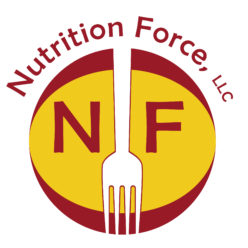Here are some facts about the National School Lunch Program (NSLP)
- Began in 1946, serving about 7.1 million children (1)
- Is the second-largest food assistance program in the United States (2)
- In 2016, the NSLP served 30.4 million school children, down from a high of 31.8 million in 2010 (1)
- Provides free- and reduced-price lunches to income-eligible students and subsidized paid lunches to students who are not eligible to receive free- or reduced-price lunches (2). About 68 percent of all lunches served are free- or reduced-price lunches (3).
- In 2010, the Healthy, Hunger-Free Kids Act of 2010 was passed (4). This was the first time in 30 years that the USDA could make real changes to the school lunch and breakfast programs. This implemented new standards to begin for the 2012-2013 school year and phase in other standards. The Healthy, Hunger-Free Kids Act of 2010 was more in line with the 2010 Dietary Guidelines for Americans (DGA) (5) and required most schools to “increase the availability of fruits, vegetables, whole grains, and fat-free and low-fat fluid milk in school meals; reduce the levels of sodium, saturated fat and trans-fat in meals; and meet the nutrition needs of school children within their calorie requirements” (5,6).
- As of 2017 the Healthy, Hunger Free Kids Act has been updated so all grains must be whole grains and an improved sodium target was implemented in 2014 (7).
- Schools participating in the NSLP are required to offer at least one option from each of the five meal components (meat/meat alternative, grain, fruit, vegetable, and milk). Students are not required to take all the five components, but they must select three of the components. Of the three components, one must be a fruit or vegetable.
- Most children generally like school lunches
1. States Department of Agriculture U. THE NATIONAL SCHOOL LUNCH PROGRAM [Internet]. Available from: http://www.fns.usda.gov/tn/team-nutrition.
2. Agriculture USD of. Budget Summary and Annual Performance Plan FY 2015 [Internet]. 2015. Available from: https://www.obpa.usda.gov/budsum/FY15budsum.pdf
3. Service F and N. National School Lunch Program: Participation and Lunches Served [Internet]. Washington DC: United States Department of Agriculture; 2014. Available from: http://www.fns.usda.gov/sites/default/files/pd/sbsummar.pdf
4. United States Department of Agriculture. Healthy Hunger-Free Kids Act | Food and Nutrition Service [Internet]. Food and Nutrition Service. 2017 [cited 2018 Sep 7]. Available from: http://www.fns.usda.gov/school-meals/healthy-hunger-free-kids-act
5. United States Department of Agriculture. National Standards in the National School Lunch and School Breakfast Programs [Internet]. Washington DC; 2012. Available from: http://www.fns.usda.gov/school-meals/nutrition-standards-school-meals
6. Department of Agriculture Food and Nutrition Service 7 CFR Parts 210 and 220 Nutrition Standards in the National School Lunch and School Breakfast Programs; Final Rule E:\FR\FM\26JAR2.SGM 26JAR2 tkelley on DSK3SPTVN1PROD with RULES2 [Internet]. 2012. Available from: www.regulations.gov
7. USDA is an Equal Opportunity Provider, Employer and Lender School Meals Patterns with Flexibilities for [Internet]. 2017. Available from: https://fns-prod.azureedge.net/sites/default/files/dietaryspecs.pdf

